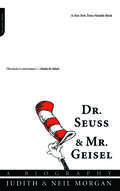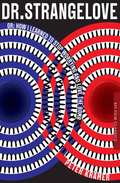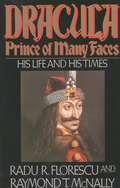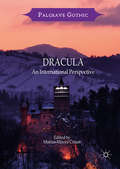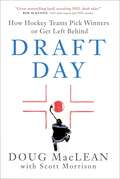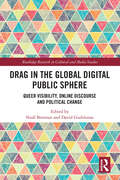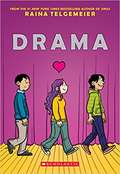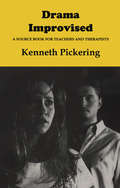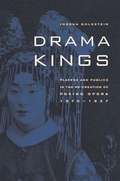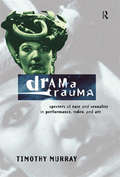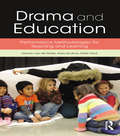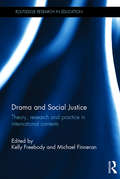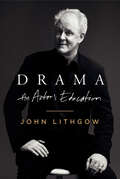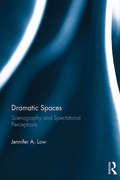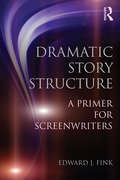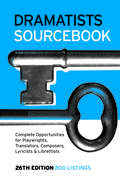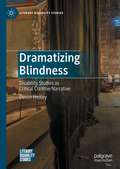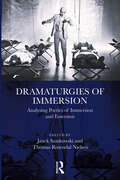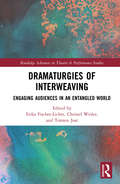- Table View
- List View
Dr. Schweitzer Of Lambaréné
by Norman CousinsDR. SCHWEITZER OF LAMBARÉNÉ is in the nature of a personal appreciation of one of the towering figures of the twentieth century. Written on the basis of firsthand knowledge and observation, it is an informal, intimate account of Albert Schweitzer at work and in repose. Norman Cousins attempts to convey some idea of the burden Schweitzer has taken upon himself--and why he chose to take it. He also tells of Schweitzer's deep concern for the natural rights and the safety of the human community on earth.This book also portrays the people around Dr. Schweitzer--the young doctors and nurses at his Hospital--why they came to Lamberéné, the difficulties they face daily in their work, how they respond to the person of Schweitzer.Abounding in remembered detail, in anecdote and description, DR. SCHWEITZER OF LAMBARÉNÉ meets squarely and with intelligent understanding the stubborn legends and partial truths about the man, his work and his thought.Norman Cousins flew to Lambaréné to observe and visit; he remained to probe some of the deepest problems of modern civilization with a man whom many consider the conscience of the age.
Dr. Seuss & Mr. Geisel: A Biography
by Judith Morgan Neil MorganHorton, Thidwick, Yertle, the Lorax, the Grinch, Sneetches, and the Cat in the Hat are just a handful of the bizarre and beloved characters Theodor S. Geisel (1904-1991), alias Dr. Seuss, created in his forty-seven children's books, from 1937's And to Think That I Saw It on Mulberry Street to 1990's Oh, the Places You'll Go! During his lifetime Dr. Seuss was honored with numerous degrees, three Academy Awards, and a Pulitzer, but the man himself remained a reclusive enigma. In this first and only biography of the good doctor, the authors, his close friends for almost thirty years, have drawn on their firsthand insights as well as his voluminous papers; the result is an illuminating, intimate portrait of a dreamer who saw the world "through the wrong end of a telescope," and invited us to enjoy the view.
Dr. Seuss and Mr. Geisel
by Judith Morgan Neil MorganHorton, Thidwick, Yertle, the Lorax, the Grinch, Sneetches, and the Cat in the Hat are just a handful of the bizarre and beloved characters Theodor S. Geisel (1904-1991), alias Dr. Seuss, created in his forty-seven children's books, from 1937's And to Think That I Saw It on Mulberry Street to 1990's Oh, the Places You'll Go! During his lifetime Dr. Seuss was honored with numerous degrees, three Academy Awards, and a Pulitzer, but the man himself remained a reclusive enigma. In this first and only biography of the good doctor, the authors, his close friends for almost thirty years, have drawn on their firsthand insights as well as his voluminous papers; the result is an illuminating, intimate portrait of a dreamer who saw the world "through the wrong end of a telescope," and invited us to enjoy the view.
Dr. Strangelove: or - How I Learned to Stop Worrying and Love the Bomb
by Peter KramerStanley Kubrick's Dr. Strangelove or: How I Learned to Stop Worrying and Love the Bomb (1964) has long been recognised as one of the key artistic expressions of the nuclear age. Made at a time when nuclear war between the United States and the Soviet Union was a real possibility, the film is menacing, exhilarating, thrilling, insightful and very funny. Combining a scene-by-scene analysis of Dr. Strangelove with new research in the Stanley Kubrick Archive, Peter Krämer's study foregrounds the connections the film establishes between the Cold War and World War II, and between sixties America and Nazi Germany. How did the film come to be named after a character who only appears in it very briefly? Why does he turn out to be a Nazi? And how are his ideas for post-apocalyptic survival in mineshafts connected to the sexual fantasies of the military men who destroy life on the surface of the Earth? This special edition features original cover artwork by Marian Bantjes.
Dr. Who & The Daleks: The Official Story of the Films
by John WalshThe definitive guide to the making of the classic 1960s Dr. Who movies, lavishly illustrated and packed with insights into these beloved films.Dr. Who and the Daleks: The Official Story of the Films is the definitive guide to the making of Dr. Who and the Daleks and Daleks&’ Invasion Earth 2150 A.D. The first and only big-screen adaptations of the long-running TV series, the films, starring Peter Cushing as the titular time-traveller, are beloved by fans – and the Daleks, in glorious Technicolor, have never looked better. Author and film expert John Walsh has unearthed a treasure trove of archive material, interviews and stunning artwork, and takes us through the whole process of translating the metal monsters from small screen to big. In-depth information on the production, design, casting and special effects is accompanied by full-colour illustrations, including props, posters, and behind-the-scenes photography – making it the perfect gift for fans of the films.
Dracula, Prince of Many Faces: His Life and His Times
by Raymond T. Mcnally Radu R. FlorescuDracula, Prince of Many Faces reveals the extraordinary life and times of the infamous Vlad Dracula of Romania (1431 - 1476), nicknamed the Impaler. Dreaded by his enemies, emulated by later rulers like Ivan the Terrible, honored by his countrymen even today, Vlad Dracula was surely one of the most intriguing figures to have stalked the corridors of European and Asian capitals in the fifteenth century.
Dracula: An International Perspective (Palgrave Gothic)
by Marius-Mircea CrişanThis volume analyses the role of Bram Stoker’s Dracula and its sequels in the evolution of the Gothic. As well as the transformation of the Gothic location—from castles, cemeteries and churches to the modern urban gothic—this volume explores the evolution of the undead considering a range of media from the 19th century protagonist to sympathetic contemporary vampires of teen Gothic. Based on an interdisciplinary approach (literature, tourism, and film), the book argues that the development of the Dracula myth is the result of complex international influences and cultural interactions. Offering a multifarious perspective, this volume is a reference work that will be useful to both academic and general readers.
Draft Day: How Hockey Teams Pick Winners or Get Left Behind
by Scott Morrison Doug MacLeanDoug MacLean, former NHL coach, general manager, team president, and one of the game&’s biggest personalities, reveals how teams build for greatness—or fail to—on hockey&’s most anticipated day. A Moneyball for hockey.The NHL draft is a critical time for teams, when the foundation for future championships is laid—or when championship dreams die. Only time will tell if a draft is successful, but a failed draft can severely set teams back for seasons, much to the dread of ownership, management, and most importantly, the fans. For even the most die-hard hockey fan, the preparation for draft day is a black box. Former president, general manager, and coach Doug MacLean takes readers behind the scenes, from the 2022 draft in Montreal to revealing draft stories from the past, to show how players are discovered and evaluated to create successful teams. Just as Moneyball illustrated the value of analytics in building teams in baseball and beyond, Draft Day shows the careful considerations that go into assessing talent for success. What is that balance in today&’s game between metrics and instinct, between analytics and traditional scouting? MacLean draws from his own career as well as anecdotes from across the league to illustrate the hard-won lessons and principles that lead to building successful teams. Hockey is big business, and this book is an invaluable resource for any leader seeking an edge for building resilient organizations. Entertaining and informative, with never-before-told details from some of the biggest moments in NHL history, Draft Day is for every hockey fan who wonders how their team develops that hard-to-define winning chemistry—or fails to, year after year.
Drafting Fundamentals for the Entertainment Classroom: A Process-Based Introduction Integrating Hand Drafting, Vectorworks, and SketchUp
by Eric AppletonDrafting Fundamentals for the Entertainment Classroom: A Process-Based Introduction to Hand Drafting, Vectorworks, and SketchUp guides students through a syllabus-formatted semester of integrated drafting concepts and skills. This book links beginner visualization practices with fundamental software knowledge through step-by-step exercises and examples. By presenting hand drafting and Vectorworks through incremental exercises, students not only gain an understanding of the tools used in drafting but also learn why the tools, practices, and standards exist in the first place. SketchUp, a user-friendly 3D modeling program, is integrated into the various exercises to help readers visualize concepts and begin modeling their own ideas. By the end of the book, students will understand drawing construction techniques, United States Institute for Theatre Technology (USITT)-recommended graphic standards, and the typical drawings created for entertainment design, preparing them to dive more deeply into the further complexities and opportunities of Vectorworks and SketchUp. Drafting Fundamentals for the Entertainment Classroom is written to complement a 14- or 15-week semester of an Entertainment Drafting course. The book’s format also provides structure for independent and self-directed study.
Drag in the Global Digital Public Sphere: Queer Visibility, Online Discourse and Political Change (Routledge Research in Cultural and Media Studies)
by Niall Brennan David GudelunasThis volume explores drag in global online spaces as a distinct departure from the established success, and limitations, of RuPaul’s Drag Race. Centered around discourses of LGBTQ+ visibility and political mobilization, the book addresses how these discourses have moved beyond the increasingly limited qualities of the television series to reconfigure the parameters of drag in emerging communities and spaces. By reconceiving of drag in new settings, this volume uncovers the crucial social and political potential for community-building in an increasingly fragmented and isolated global space. Chapters by a diverse team of authors delve into the recognition of new articulations of LGBTQ+ visibility and political mobility through drag in online space; the implications of drag celebrity for issues such as labor and profit in the digital sphere; the (re)appropriation of mainstream drag in emerging online environments and communities; and the reverberations of drag in underrepresented and under-researched areas of the world. Offering new insights into the rise of drag in a global digital public sphere, this book will be of interest to scholars and students of media studies, cultural studies, digital media and cultural studies, critical race studies, gender studies, sexuality studies, queer theory, film, and television studies.
Dragon Mage Academy (Princess Of Dragons #1)
by Cordelia CastelA disguised princess. A murder most malicious. A dragon condemned to death.<P><P>Desperate to escape a forced marriage, seventeen-year-old Princess Alba disguises herself to join the all-male Dragon Mage Academy. Her plans go wrong when a dragon accused of murder forms a telepathic link: the deepest possible bond between dragon and rider. And it can only mean one thing: If the dragon is executed, Alba will die. With her fate intertwined with that of the condemned dragon, Alba must prove its innocence to save both their lives. But can she achieve this before the Academy's rigorous regime breaks Alba's spirit? Readers will love this page-turning fantasy adventure!
Drama
by Raina TelgemeierThe bestselling, award-winning author of Smile brings us her next full-colour graphic novel! Callie loves theater. And while she would totally try out for her middle school's production of Moon Over Mississippi, she's a terrible singer. Instead she's the set designer for the stage crew, and this year she's determined to create a set worthy of Broadway on a middle-school budget. But how can she, when she doesn't know much about carpentry, ticket sales are down, and the crew members are having trouble working together? Not to mention the onstage AND offstage drama that comes once the actors are chosen, and when two cute brothers enter the picture, things get even crazier! Following the success of Smile, Raina Telgemeier brings us another graphic novel featuring a diverse set of characters that humorously explores friendship, crushes, and all-around drama!
Drama Improvised: A Sourcebook for Teachers and Therapists
by Kenneth PickeringThis book provides a practical, accessible, and inexpensive guide to using improvisation in drama, which lies at the root of actor training, educational drama and drama therapy, in a wide variety of situations. It is useful for teachers, organizers of drama workshops, therapists and trainers.
Drama Kings: Players and Publics in the Re-Creation of Peking Opera, 1870-1937
by Joshua GoldsteinIn this colorful and detailed history, Joshua Goldstein describes the formation of the Peking opera in late Qing and its subsequent rise and re-creation as the epitome of the Chinese national culture in Republican era China.
Drama Kings: Players and Publics in the Re-creation of Peking Opera, 1870-1937
by Joshua GoldsteinIn this colorful and detailed history, Joshua Goldstein describes the formation of the Peking opera in late Qing and its subsequent rise and re-creation as the epitome of the Chinese national culture in Republican era China. Providing a fascinating look into the lives of some of the opera's key actors, he explores their methods for earning a living; their status in an ever-changing society; the methods by which theaters functioned; the nature and content of performances; audience make-up; and the larger relationship between Peking opera and Chinese nationalism. Propelled by a synergy of the commercial and the political patronage from the Qing court in Beijing to modern theaters in Shanghai and Tianjin, Peking opera rose to national prominence. The genre's star actors, particularly male cross-dressing performers led by the exquisite Mei Lanfang and the "Four Great Female Impersonators" became media celebrities, models of modern fashion and world travel. Ironically, as it became increasingly entrenched in modern commercial networks, Peking opera was increasingly framed in post-May fourth discourses as profoundly traditional. Drama Kings demonstrates that the process of reforming and marketing Peking opera as a national genre was integrally involved with process of colonial modernity, shifting gender roles, the rise of capitalist visual culture, and new technologies of public discipline that became increasingly prevalent in urban China in the Republican era.
Drama Trauma: Specters of Race and Sexuality in Performance, Video and Art
by Timothy MurrayIn this engaging cross-disciplinary study, Timothy Murray examines the artistic struggle over traumatic fantasies of race, gender, sexuality, and power. Establishing a retrospective dialogue between past and present, stage and video, Drama Trauma links the impact of trauma on recent political projects in performance and video with the specters of difference haunting Shakespeare's plays. The book provides close readings of cultural formations as diverse as Shakespearean drama, the Statue of Liberty, contemporary plays by women, African-American performance, and feminist interventions in video, performance and installation. The texts discussed include: * installations by Mary Kelly and Dawn Dedeaux, * plays by Ntozake Shange, Rochelle Owens, Adrienne Kennedy, Marsha Norman and Amiri Baraka * performances by Robbie McCauley, Jordan, Orlan, and Carmelita Tropicana * stage, film and video productions of King Lear, Othello, Romeo and Juliet and All's Well that Ends Well.
Drama and Education: Performance Methodologies for Teaching and Learning
by Manon van de Water Mary McAvoy Kristin HuntDrama and Education provides a practical, comprehensive guide to drama as a tool for teaching and learning. It is among the first practical drama and performance textbooks that address brain-based, neuroscientific research, making the argument that creativity is necessary in our lives, that embodied learning is natural and essential, and that contextual learning helps us find our place in society in relationship to other peoples and cultures. As well as a historical and theoretical overview of the field, it provides rationale and techniques for several specific methodologies:?linear drama, process-oriented drama, drama for social justice, and performance art. Each approach is supplemented with sample lesson plans, activities, ideas for differentiation, and extensive bibliographies. The topics are discussed from five key angles: ? • Historical and theoretical foundations • Curricular applications • Practical toolkits for a range of classrooms and learning environments • Different strategies for lesson plans • Extension options for longer workshops. ? Alongside these core methods, the integration of other innovative forms—from performance art to Theatre of the Oppressed—into drama-based learning is explored, as well as the pragmatic concerns such as assessment, planning, and advocacy for arts learning and arts education partnerships. ? Drama and Education is the comprehensive textbook for teachers and students on Applied Theatre and Theatre and Education courses. ?
Drama and Social Justice: Theory, research and practice in international contexts (Routledge Research in Education)
by Kelly Freebody Michael Finneran"This text offers a cohesive framework for exploring social justice through drama and drama from a social justice perspective. Research based examples of practice from a range of international contexts link theory and practice. Connecting chapters raise key critical questions in an engaging dialogue format. An important addition to the literature on social justice education." - Lee Anne Bell, author Storytelling for Social Justice (2010) and co-editor of Teaching for Diversity and Social Justice (Routledge, 2007) Much has been written within the tradition of drama education and applied theatre around the premise that drama can be a force for change within both individual lives and society more broadly. However, little has been published in terms of charting the nature of this relationship. By combining theoretical, historical and practical perspectives, this book unpacks and explores drama’s intrinsically entwined relationship with society more comprehensively and critically.Chapters gather together and develop a range of theoretical understandings of social justice in applied drama in the first part of the book, which are then used to frame and inform more focused discussions of drama research and practice in the second. Contributors move beyond practical understandings of drama for empowerment or development in order to engage with the philosophy of praxis – the interconnected and symbiotic nature of theory derived from practice, and practice derived from theory. Including concrete examples from current research and practice in the field, the book opens up a conversation on and counter-narrative to perceptions of the nature and impact of applied theatre and drama education on social justice.Drama and Social Justice will be key reading for postgraduate students, academics, researchers and field-based practitioners in the areas of applied drama and theatre, education and youth work, and social justice and the social sciences.
Drama: An Actor's Education
by John LithgowThis “warm and generous” memoir is “brisk . . . packed with funny stories. . . . A buoyant, heartwarming account of coming into one’s own” (New York Times Book Review).Award–winning actor John Lithgow presents a charming, witty, and revealing memoir about his family, his work, and his life in Drama—an intimate story of insights and inspirational reflections from one of America’s most beloved actors. Lithgow pays tribute to his father, his greatest influence, and relives his collaborations with renowned performers and directors including Mike Nichols, Bob Fosse, Liv Ullmann, Meryl Streep, and Brian De Palma. A compelling reflection on the trials, triumphs, and changes across his long career, Lithgow’s Drama illuminates the inner life of a celebrated talent, and points the way forward for anyone aspiring to greatness in their own life.“Drama is a cut above?touching, self-aware, and beautifully written.” —People “Anyone interested in an actor’s life?especially backstage?will find this book enlightening.” —USA Today“A memoir as finely crafted as one of Lithgow’s performances.” —Steve Martin“Finely articulated as it is heartfelt . . . moving and candid.” —John Irving“A great read.” —Mary Karr, New York Times bestselling author of The Liar’s Club“Unflinching and irresistible.” —Gay Talese“Drama recounts in graceful, considered prose a life that after a few wrong turns is now happier and more well-adjusted than most.” —Charles McGrath, New York Times“Lithgow rises to the occasion with courageous honesty and fairness.’” —Los Angeles Times“John Lithgow’s memoir, Drama, reminded me that the world is indeed all a stage and that professionals have some great ideas about how to perform on it.” —Drew Gilpin Faust, The Wall Street Journal
Dramatic Spaces: Scenography and Spectatorial Perceptions
by Jennifer LowFor literary scholars, plays are texts; for scenographers, plays are performances. Yet clearly a drama is both text and performance. Dramatic Spaces examines period-specific stage spaces in order to assess how design shaped the thematic and experiential dimensions of plays. This book highlights the stakes of the debate about spatiality and the role of the spectator in the auditorium – if audience members are co-creators of the drama, how do they contribute? The book investigates: Roman comedy and Shakespearean dramas in which the stage-space itself constituted the primary scenographic element and actors’ bodies shaped the playing space more than did sets or props the use of paid applauders in nineteenth-century Parisian theaters and how this practice reconfigured theatrical space transactions between stage designers and spectators, including work by László Moholy-Nagy, William Ritman, and Eiko Ishioka Dramatic Spaces aims to do for stage design what reader-response criticism has done for the literary text, with specific case studies on Coriolanus, The Comedy of Errors, Romeo and Juliet, Tales of Hoffman, M. Butterfly and Tiny Alice exploring the audience’s contribution to the construction of meaning.
Dramatic Story Structure: A Primer for Screenwriters
by Edward J. FinkA successful screenplay starts with an understanding of the fundamentals of dramatic story structure. In this practical introduction, Edward J. Fink condenses centuries of writing about dramatic theory into ten concise and readable chapters, providing the tools for building an engaging narrative and turning it into an agent-ready script. Fink devotes chapters to expanding on the six basic elements of drama from Aristotle’s Poetics (plot, character, theme, dialogue, sound, and spectacle), the theory and structure of comedy, as well as the concepts of unity, metaphor, style, universality, and catharsis. Key terms and discussion questions encourage readers to think through the components of compelling stories and put them into practice, and script formatting guidelines ensure your finished product looks polished and professional. Dramatic Story Structure is an essential resource not only for aspiring screenwriters, but also for experienced practitioners in need of a refresher on the building blocks of storytelling.
Dramatists Sourcebook
by Theatre Communications Group"A treasure trove of sound advice and practical information for the working writer."-Donald Margulies, Pulitzer Prize-winning playwrightCalled "the essential guide to professional opportunities and playscript procedures" by the Dramatist Guild of America, the Dramatists Sourcebook contains more than eight hundred opportunities for playwrights, translators, composers, lyricists, and librettists, including script-submission procedures for more than three hundred professional theaters; more than one hundred prizes; and scores of publishers, fellowships, residencies, agents, and reference publications. This fully revised edition is thoroughly indexed and contains a calendar of submission guidelines and Tony Kushner's "Simple Working Guide for Playwrights."
Dramatizing Blindness: Disability Studies as Critical Creative Narrative (Literary Disability Studies)
by Devon HealeyDramatizing Blindness: Disability Studies as Critical Creative Narrative engages with the cultural meanings and movements of blindness. This book addresses how blindness is lived in particular contexts—in offices of ophthalmology and psychiatry, in classrooms of higher education, in accessibility service offices, on the street, and at home. Taking the form of a play written in five acts, the narrative dramatizes how the main character’s blindness is conceived of in the world and in the self. Each act includes an analysis where blind studies is explored in relation to disability studies. This work reveals the performative enactment of blindness that is lived in the public as well as in the private corners of the self, demonstrating how blindness is a form of perception. Devon Healey’s work orients to blindness as a necessary and creative feature of the sensorium and shows how blindness is a form of perception.
Dramaturgies of Immersion: Analysing Poetics of Immersion and Emersion
by Janek Szatkowski Thomas Rosendal NielsenDramaturgies of Immersion draws on case studies from international productions to conceptualise and analyse the state of contemporary immersive theatre. Immersion appears in different forms, raising the core question: What is at stake in immersive theatre for participants, artists, and society? The answer depends on the underlying values of the different immersive poetics.The book takes a multifaceted approach to immersive theatre and its dramaturgies to explore the forms of emersion rendered possible by immersion in a number of cases from international and Danish performances. The edited collection examines how theatre in the 21st century finds adequate forms that allow it to both entertain and stay socially relevant. The chapters build on each other, developing a specific way of thinking about and analysing dramaturgies in immersive theatre, as well as offering tools for dramaturgical analysis.An insightful exploration of the potentials of immersive theatre, Dramaturgies of Immersion is essential for advanced undergraduate and postgraduate students of dramaturgy and immersive theatre, scholars and researchers in these fields, as well as theatre practitioners.
Dramaturgies of Interweaving: Engaging Audiences in an Entangled World (Routledge Advances in Theatre & Performance Studies)
by Erika Fischer-Lichte, Christel Weiler and Torsten JostDramaturgies of Interweaving explores present-day dramaturgies that interweave performance cultures in the fields of theater, performance, dance, and other arts. Merging strategies of audience engagement originating in different cultures, dramaturgies of interweaving are creative methods of theater and art-making that seek to address audiences across cultures, making them uniquely suitable for shaping people’s experiences of our entangled world. Presenting in-depth case studies from across the globe, spanning Australia, China, Germany, India, Iran, Japan, Singapore, Taiwan, Vietnam, the US, and the UK, this book investigates how dramaturgies of interweaving are conceived, applied, and received today. Featuring critical analyses by scholars—as well as workshop reports and artworks by renowned artists—this book examines dramaturgies of interweaving from multiple locations and perspectives, thus revealing their distinct complexities and immense potential. Ideal for scholars, students, and practitioners of theater, performance, dramaturgy, and devising, Dramaturgies of Interweaving opens up an innovative perspective on today’s breathtaking plurality of dramaturgical practices of interweaving in theater, performance, dance, and other arts, such as curation and landscape design.

